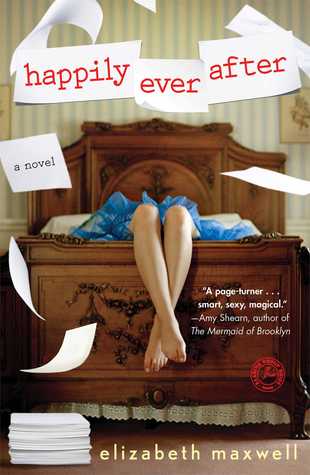This review was originally posted on Goodreads.com and reviews.wheelerc.org on March 6, 2014.
Crafty
Elizabeth Maxwell, the author, uses two separate devices to tell her story. The first, which is only used to get the story started although it becomes the plot, is a writer telling a story, switching back to her life, story.
 The second one, which works but I doubt will ever work for any of Maxwell’s readers a second time, is the use of craft to tell a story.
The second one, which works but I doubt will ever work for any of Maxwell’s readers a second time, is the use of craft to tell a story.
That is to say, using information about the craft the narrator is engaged in to further propel the story. Think USA’s “Burn Notice.” In that instance, a spy of sorts engages the viewer with it, with its background, with its creation and destruction, as a means to further his own narrative. Maxwell does the same, but for something she engages in: the writing of the romance novel.
This isn’t a knock on Happily Ever After (which is a terribly generic title.) It works in the context of the book. It’s fully enjoyable. The problem arises with, it’s a one-use-only kind of device, and one that used in this more narrowed instance, ruins all future uses by any other authors for readers.
That is to say, I don’t ever want to read another book that uses a telling of the craft of romance writing to propel a novel because, how many novels worth of craft are there to write about? There is a certain plateau, beyond which, everything is just jargon.
Others have made comparisons to the film “Stranger Than Fiction.” Certainly, the comparison is apt. They’re the same kind of stories, the same sub-genre of sorts. Really, that’s where the comparison should end.
Exceeded expectations
I assumed when I started the book, but after I had read the reviews, I would hate it. I don’t trust the overly positive, but short, reviews and the negatives one seemed to parrot what I’ve seen as warning signs for other books.
(Click link to read the rest of the review):
I was wrong. I enjoyed the book, although I found it to be an incredibly fast read. Double spacing probably has something to do with that.
Almost all of the pacing was on track, dialogue was well enough, there was enough setting, although New York could have used some more flavor.
My biggest gripe is the lack of character’s physical descriptions. With what little there was, I wasn’t quite sure how to frame the characters in my mind. They did not embody anything, which was a shame.
However, the character development can feel a bit forced. It’s certainly there.
Present tense
The book, I realized 2/3 of the way through, takes place in present tense. I’m not normally a fan of the present tense for narrative writing, but, it worked perfectly fine. Interesting decision on her part, especially as it feels much of the book has already unfolded and the narrator is telling the story as she looks back on it. Just a slight bit of cognitive dissonance there.
Semi-ironic slut shaming
The main character, the narrator, meets her love interest on Craigslist, searching for a sex-only relationship.
Still, she slut-shames her neighbor. She wants the heroine of her romance novel to be a strong woman, a woman who doesn’t need a man but instead, engages men on her own terms. She runs a females-only household. Still, she slut-shames her neighbor. Just a little bit of cognitive dissonance.
“Well, Jane’s mother just invited the guy who teaches her gold at the club to move into their house. He’s even sleeping in Jane’s mother’s room!” (Allison, the main character’s daughter, said)
That’s because Jane’s mother is a slut.
Conclusion
Slut-shaming aside, I enjoyed the book. It was well written.
This book was received, free of charge, through the Goodreads First Reads program. Quotes may not be accurate as they were culled from an advanced uncorrected proof.
